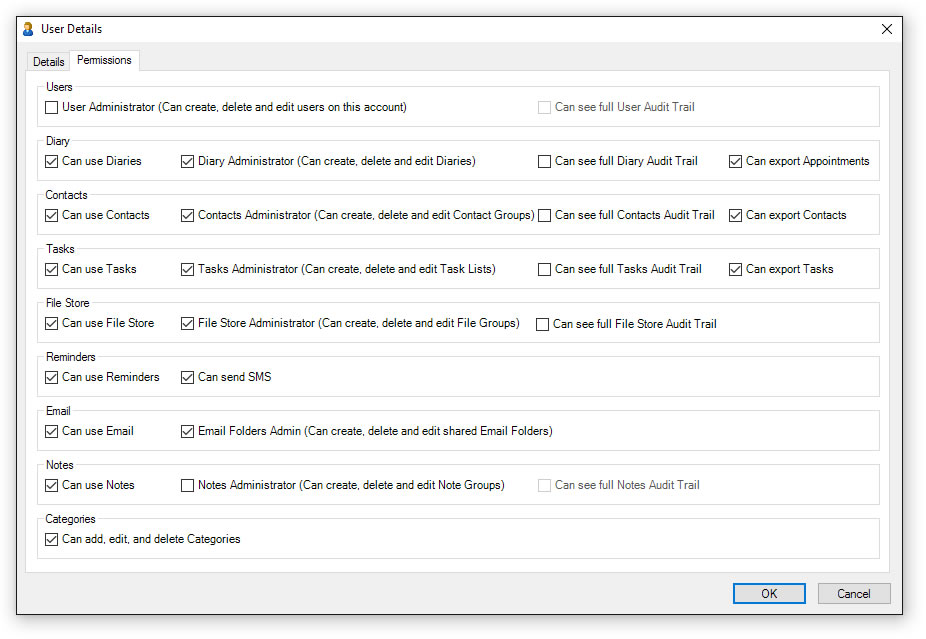Understanding
User Permissions
MyOffice allows you to assign various permissions to users in order to restrict what they can do. These can be found in the Permissions tab of the User Details dialog, as accessed from User Admin. The screenshot below shows this tab. If you're unsure as to how to open user admin, refer to How to create, edit, and delete users.

User Administrator permission
Users with "User Administrator" permission are able to create, edit, and delete users within your account. This permission should only be granted to users who're "in charge" of the account - owners, managers, etc. There must always be at least one user in each account with "User Administrator" permission. Only users with this permission can access the user admin functionality that you're currently using.
"Can Use" permissions
It's possible to control which parts of MyOffice your users can use. Calendars, contacts, tasks, file store, reminders notes, and email can all be controlled in this way. By default, these permissions are enabled so your users can use all parts of MyOffice. If, for example, you wanted to prevent one of your users from accessing any contacts, you would disable the "Can use Contacts" permission for the user in question.
"Administrator" permissions
Users with "Calendar Administrator" permission are able to create, share, edit, and delete Calendars. Users with "Contacts Administrator" permission are able to create, share, edit, and delete Contact Groups. The same principle applies to users with administration privileges for the other areas of MyOffice. The "Administrator" permissions also control which users are able to customise the format of your data via "User Defined Fields". Users without these permissions will still be able to, for example, create, edit, and delete events within the calendars they're allowed to work with, but would be unable to create new calendars, delete existing calendars, or change who's able to see calendars.
"Audit Trail" permissions
Users with "Audit Trail" permission are able to see the full audit trail for the modules for which they've been given audit trail permission. The full audit trail allows users to see every change that's been made to data within the module in question. This is very useful for managers who need to keep track of what's happening to their data, but shouldn't normally be given to ordinary users as it allows those users to potentially see data they should not have sight of.